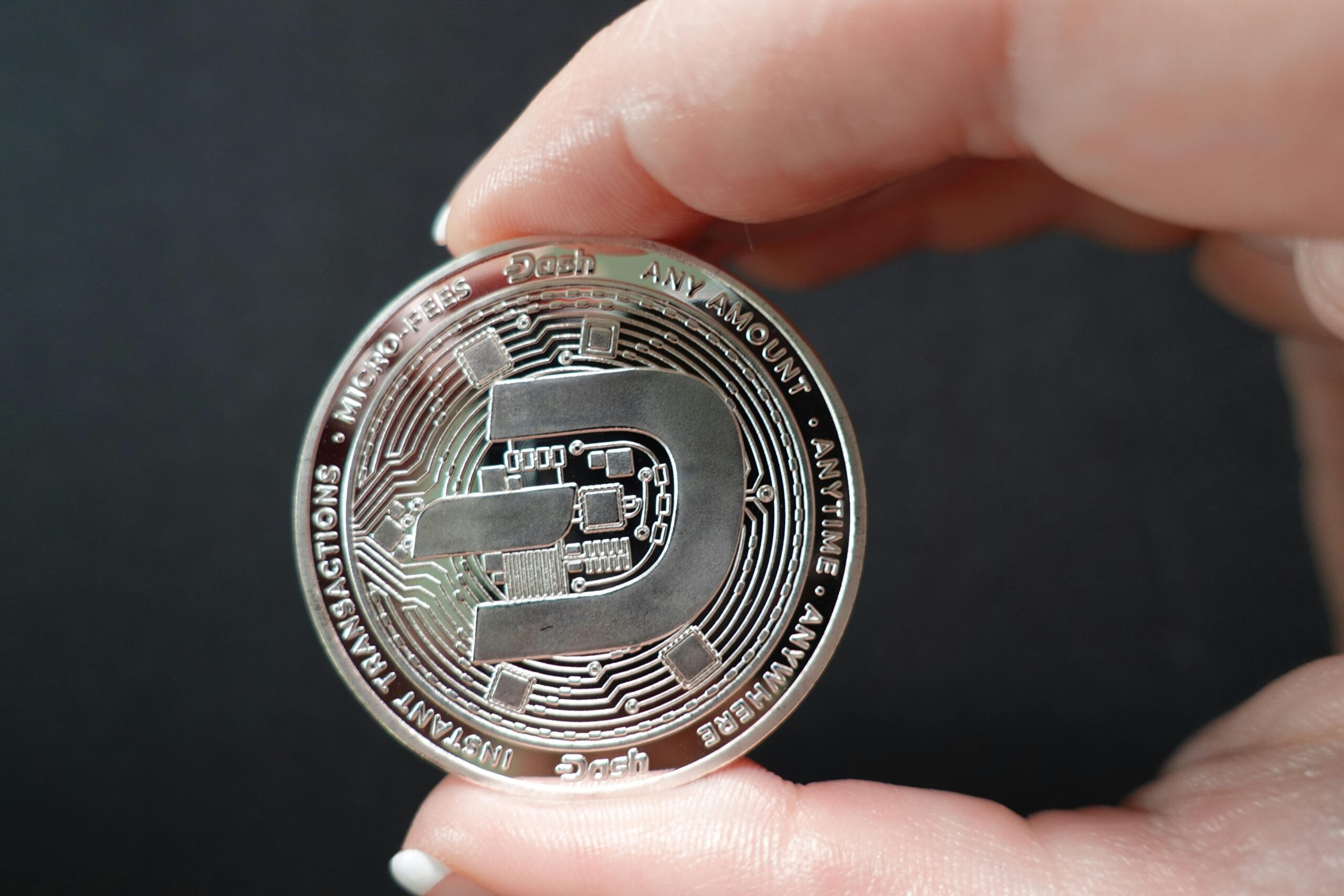Types of Cryptocurrency
Cryptocurrency has taken the world by storm, transforming the financial landscape and captivating the imaginations of tech enthusiasts, investors, and the curious alike. Let’s dive into the fascinating world of cryptocurrencies, exploring the different types that exist and what makes each unique.
1. Bitcoin (BTC)
The Pioneer
Bitcoin, the first cryptocurrency, was introduced in 2009 by an unknown person or group using the pseudonym Satoshi Nakamoto. Often referred to as digital gold, Bitcoin operates on a decentralized network called blockchain, ensuring transparency and security.
Key Features:
- Decentralized: No central authority controls Bitcoin.
- Limited Supply: Only 21 million Bitcoins will ever be mined.
- Store of Value: Seen as a hedge against inflation.
2. Ethereum (ETH)
The Smart Contract Innovator
Launched in 2015 by Vitalik Buterin, Ethereum goes beyond being a digital currency. It introduced the concept of smart contracts, self-executing contracts with the terms directly written into code.
Key Features:
- Smart Contracts: Automate transactions and agreements.
- Decentralized Applications (dApps): Supports a variety of applications beyond finance.
- Ether: The native cryptocurrency used to pay for transactions and computational services.
3. Ripple (XRP)

The Payment Protocol
Ripple, launched in 2012, focuses on enabling real-time, cross-border payment solutions. It aims to work with the traditional financial system rather than replace it.
Key Features:
- Speed: Transactions settle in seconds.
- Partnerships: Collaborates with banks and financial institutions.
- XRP: Used as a bridge currency in cross-border transactions.
4. Litecoin (LTC)
The Silver to Bitcoin’s Gold
Created by Charlie Lee in 2011, Litecoin was designed to be a faster and cheaper alternative to Bitcoin. It’s often referred to as the silver to Bitcoin’s gold.
Key Features:
- Faster Transactions: Block generation time of 2.5 minutes.
- Supply: 84 million Litecoins.
- Mining Algorithm: Uses Scrypt, making it accessible for mining with consumer-grade hardware.
5. Bitcoin Cash (BCH)
The Scalable Bitcoin Fork
Bitcoin Cash emerged in 2017 from a hard fork of Bitcoin, aiming to solve Bitcoin’s scalability issues by increasing the block size limit.
Key Features:
- Larger Block Size: Allows more transactions per block.
- Lower Fees: Designed to handle higher transaction volumes with lower costs.
- Community-Driven: Emphasis on maintaining decentralization.
6. Cardano (ADA)
The Academic Blockchain
Cardano, founded by Charles Hoskinson in 2017, emphasizes a research-driven approach to blockchain development. It aims to create a more secure and scalable platform for smart contracts.
Key Features:
- Ouroboros Protocol: A proof-of-stake consensus mechanism.
- Layered Architecture: Separates the ledger and computation layers for better security.
- Academic Research: Development guided by peer-reviewed research.
7. Polkadot (DOT)
The Interoperability Champion
Polkadot, launched by Dr. Gavin Wood in 2020, focuses on enabling different blockchains to interoperate seamlessly.
Key Features:
- Relay Chain: The main chain that coordinates consensus and communication.
- Parachains: Custom blockchains that connect to the relay chain.
- Interoperability: Facilitates communication and transfers between different blockchains.
8. Binance Coin (BNB)
The Exchange Utility Token
Initially launched as an ERC-20 token on Ethereum, Binance Coin is now the native cryptocurrency of Binance Chain. It’s primarily used to pay for transaction fees on the Binance Exchange.
Key Features:
- Utility Token: Offers discounts on trading fees when used on Binance.
- Burn Mechanism: Binance regularly burns BNB tokens, reducing supply.
- Versatility: Can be used for various services within the Binance ecosystem.
9. Chainlink (LINK)
The Oracle Network
Chainlink, created by Sergey Nazarov in 2017, is a decentralized oracle network that connects smart contracts with real-world data.
Key Features:
- Oracles: Securely provides external data to smart contracts.
- Decentralization: Prevents single points of failure.
- Integration: Widely integrated with various blockchain projects.
10. Stellar (XLM)
The Financial Inclusion Facilitator
Launched in 2014 by Jed McCaleb, Stellar aims to facilitate cross-border transactions and promote financial inclusion.
Key Features:
- Low Transaction Costs: Designed to be cost-effective.
- Stellar Lumens (XLM): The native cryptocurrency used for transaction fees and multi-currency transactions.
- Partnerships: Collaborates with banks and financial institutions to bridge fiat and digital currencies.
11. Dogecoin (DOGE)
The Meme Coin
Originally created as a joke in 2013 by Billy Markus and Jackson Palmer, Dogecoin has grown into a popular cryptocurrency, largely driven by its community and online memes.
Key Features:
- Inflationary Supply: No maximum supply, ensuring continuous mining.
- Community Support: Strong, active community and social media presence.
- Low Transaction Fees: Cost-effective for micropayments and tipping.
12. Monero (XMR)
The Privacy-Focused Coin
Launched in 2014, Monero prioritizes privacy and anonymity, making it a favorite among those seeking secure, untraceable transactions.
Key Features:
- Privacy: Uses ring signatures, stealth addresses, and confidential transactions.
- Decentralization: Strong focus on decentralized development.
- Fungibility: Each unit of Monero is interchangeable and indistinguishable from another.
13. Tezos (XTZ)
The Self-Amending Blockchain
Tezos, launched in 2018, features a unique governance mechanism that allows stakeholders to vote on protocol upgrades, avoiding hard forks.
Key Features:
- On-Chain Governance: Stakeholders propose and vote on changes.
- Self-Amendment: Allows the blockchain to upgrade itself.
- Proof-of-Stake (PoS): Energy-efficient consensus mechanism.
14. EOS (EOS)
The Decentralized Operating System
EOS, created by Dan Larimer in 2018, aims to provide a scalable, user-friendly platform for decentralized applications.
Key Features:
- Scalability: High throughput and low latency.
- Free Transactions: Users don’t pay fees for transactions.
- Governance: On-chain governance with voting and arbitration mechanisms.
15. Tron (TRX)
The Decentralized Entertainment Ecosystem
Founded by Justin Sun in 2017, Tron aims to decentralize the internet, focusing on the entertainment industry and content sharing.
Key Features:
- Content Sharing: Enables content creators to earn directly from users.
- High Throughput: Capable of handling a high number of transactions per second.
- DApp Support: Hosts a wide range of decentralized applications.
16. NEO (NEO)
The Chinese Ethereum
NEO, often referred to as the Chinese Ethereum, aims to digitize assets and automate the management of digital assets using smart contracts.
Key Features:
- Smart Economy: Combines digital assets, digital identity, and smart contracts.
- Dual Tokens: NEO for governance and GAS for transaction fees.
- Regulatory Compliance: Designed with regulatory considerations in mind.
17. Dash (DASH)

The Digital Cash
Dash, launched in 2014 by Evan Duffield, focuses on fast, low-cost payments suitable for everyday use.
Key Features:
- InstantSend: Nearly instantaneous transactions.
- PrivateSend: Enhanced privacy features.
- Masternodes: Special nodes that provide advanced services and governance.
18. Zcash (ZEC)
The Zero-Knowledge Proof Coin
Zcash, launched in 2016, offers optional anonymity using zero-knowledge proofs, enabling transactions to be verified without revealing information.
Key Features:
- Privacy: Shielded transactions hide sender, recipient, and amount.
- Zero-Knowledge Proofs: Allows verification without disclosing details.
- Transparency: Users can choose between transparent and shielded transactions.
19. IOTA (MIOTA)
The Internet of Things Coin
IOTA, launched in 2016, is designed for the Internet of Things (IoT), enabling secure sales and trading data streams.
Key Features:
- Tangle: A unique data structure that eliminates the need for miners.
- Scalability: Increased efficiency with more network participants.
- Fee-Less Transactions: No transaction fees.
20. VeChain (VET)
The Supply Chain Solution
VeChain, founded in 2015, focuses on enhancing supply chain management and business processes using blockchain technology.
Key Features:
- Dual Tokens: VET (value transfer) and VTHO (energy for transactions).
- Supply Chain Tracking: Provides transparency and authenticity.
- Partnerships: Collaborates with major corporations for real-world applications.
21. Algorand (ALGO)
The Pure Proof-of-Stake Pioneer
Founded by Turing Award-winning cryptographer Silvio Micali, Algorand focuses on scalability, security, and decentralization.
Key Features:
- Pure Proof-of-Stake: Consensus mechanism that ensures security and speed.
- Smart Contracts: Supports complex smart contract functionality.
- Scalability: Capable of handling high transaction volumes efficiently.
22. Cosmos (ATOM)
The Internet of Blockchains
Cosmos aims to create an ecosystem of interconnected blockchains, enhancing interoperability and scalability.
Key Features:
- Tendermint Consensus: Fast, secure, and scalable consensus algorithm.
- Inter-Blockchain Communication (IBC): Facilitates interaction between different blockchains.
- Modular Architecture: Allows developers to build custom blockchains.
23. Maker (MKR)

The Decentralized Stablecoin Pioneer
MakerDAO, launched in 2017, is the organization behind the DAI stablecoin. MKR is the governance token used to manage the Maker Protocol.
Key Features:
- DAI Stablecoin: A decentralized, collateral-backed stablecoin pegged to the USD.
- Governance: MKR holders vote on changes to the protocol.
- Decentralized Finance (DeFi): Plays a key role in the DeFi ecosystem.
24. Solana (SOL)
The High-Performance Blockchain
Solana, founded by Anatoly Yakovenko in 2020, is known for its high speed and low transaction costs, making it ideal for DeFi and NFT applications.
Key Features:
- Proof of History (PoH): Unique consensus mechanism that enhances speed.
- Scalability: Capable of processing thousands of transactions per second.
- Ecosystem Growth: Rapidly expanding ecosystem with various dApps and projects.
25. Avalanche (AVAX)
The Platform of Platforms
Avalanche, launched by Ava Labs in 2020, aims to provide a highly scalable and efficient platform for decentralized applications and enterprise blockchain deployments.
Key Features:
- Consensus Protocol: High throughput and low latency.
- Subnets: Customizable blockchains within the Avalanche network.
- Interoperability: Supports Ethereum Virtual Machine (EVM), enabling compatibility with Ethereum dApps.
26. Hedera Hashgraph (HBAR)
The Enterprise-Grade Network
Hedera Hashgraph offers a unique consensus algorithm that provides high speed, security, and fairness, making it suitable for enterprise applications.
Key Features:
- Hashgraph Consensus: Fast, fair, and secure.
- Governing Council: Managed by leading global organizations.
- Microtransactions: Efficient for small, frequent transactions.
27. Elrond (EGLD)
The Internet-Scale Blockchain
Elrond focuses on achieving high scalability and speed through a unique Adaptive State Sharding mechanism and a Secure Proof of Stake (SPoS) consensus algorithm.
Key Features:
- Adaptive State Sharding: Enhances scalability and efficiency.
- Secure Proof of Stake: Combines security and speed.
- Ecosystem: Supports dApps, smart contracts, and enterprise use cases.
28. Theta (THETA)

The Decentralized Video Delivery Network
Theta aims to revolutionize video streaming by providing a decentralized platform that improves quality and reduces costs.
Key Features:
- Decentralized Streaming: Peer-to-peer video delivery.
- Incentives: Users earn rewards for sharing bandwidth.
- Enterprise Partnerships: Collaborates with major companies in the streaming industry.
29. Kusama (KSM)
The Experimental Polkadot
Kusama serves as a canary network for Polkadot, allowing developers to test and experiment with new features before deploying them on Polkadot.
Key Features:
- Early Deployment: New features are tested on Kusama before Polkadot.
- Scalability: Supports multiple parallel blockchains.
- Governance: Community-driven with a faster governance process.
30. Filecoin (FIL)
The Decentralized Storage Network
Filecoin aims to create a decentralized storage marketplace, allowing users to rent out their excess storage space.
Key Features:
- Decentralized Storage: Users can store and retrieve data securely.
- Incentives: Miners earn FIL tokens for providing storage.
- InterPlanetary File System (IPFS): Filecoin is built on top of IPFS, enhancing data storage and retrieval.
Conclusion
The world of cryptocurrency is vast and varied, with each type offering unique features and use cases. Whether you’re interested in digital gold like Bitcoin, smart contract platforms like Ethereum, or privacy-focused coins like Monero, there’s a cryptocurrency for every interest and need. As this technology continues to evolve, we can expect even more innovation and diversity in the cryptocurrency landscape.





I view something truly special in this internet site.